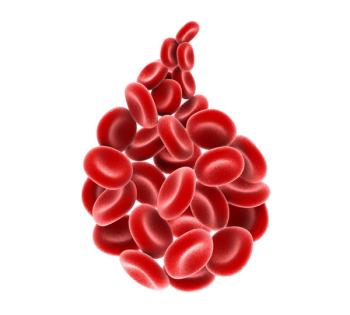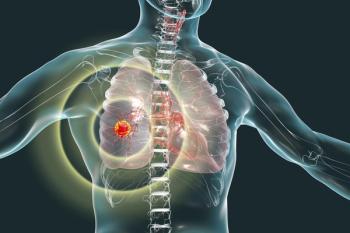
- ONCOLOGY Vol 11 No 11
- Volume 11
- Issue 11
Update: Trends in AIDS Incidence in the United States
Provisional surveillance data about acquired immunodeficiency syndrome (AIDS) for the first 6 months of 1996 indicated a
Provisional surveillance data about acquired immunodeficiency syndrome (AIDS) for the first 6 months of 1996 indicated a decrease in deaths among persons with AIDS, attributed primarily to the effect of antiretroviral therapies on the survival of persons infected with human immunodeficiency virus (HIV). This report describes a decline in AIDS incidence during 1996 compared with 1995 and the continued decline in AIDS deaths; the findings indicate that HIV therapies are having a widespread beneficial impact on the rate of HIV disease progression in the United States.
Cumulative AIDS cases among persons age ³ 13 years reported to the Centers for Disease Control (CDC) through June 1997 from the 50 states, the District of Columbia, and the US territories were analyzed by sex, age, race/ethnicity, and mode of risk/exposure.a Estimates of AIDS incidence and deaths were adjusted for delays in reporting. For analysis by risk/exposure, estimates were adjusted for the anticipated reclassification of cases initially reported without an AIDS risk/exposure. To adjust for the 1993 expansion of the AIDS reporting criteria,b estimates of the incidence of AIDS-opportunistic illnesses were calculated from the sum of cases reported with an AIDS-opportunistic illness and cases with estimated dates of diagnosis of an AIDS-opportunistic illness that were reported based only on immunologic criteria. Incidence of AIDS-opportunistic illness was estimated quarterly through December 1996 (the most recent period for which reliable estimates were available). Deaths among persons with AIDS were identified by review of medical records and death certificates and represent both deaths for HIV-related and other causes. AIDS prevalence was estimated as the cumulative incidence of AIDS based on the 1993 expanded AIDS case criteria minus cumulative deaths. Populations with less than 500 estimated cases were excluded because the estimates of annual percentage change from 1995 to 1996 in AIDS-opportunistic illness incidence, deaths, and prevalence are not reliable.
AIDS-Opportunistic Illness Incidence
During 1996, AIDS-opportunistic illnesses were diagnosed in an estimated 56,730 persons, a decline of 6% compared with 1995 (Figure 1). This represents the first calendar year during which AIDS-opportunistic illness incidence did not increase overall in the United States.
From 1995 to 1996, incidence of AIDS-opportunistic illness declined in all four geographic regions of the United States (West, 12%; Midwest, 10%; Northeast, 8%; and South, 1%).c AIDS-opportunistic illness incidence decreased in all 5-year age groups: men, non-Hispanic whites and Hispanics, men who have sex with men, injecting-drug users, and men who reported both of these exposures (Table 1). The largest proportionate declines occurred among non-Hispanic white men who had sex with men (Figure 2) and non-Hispanic white and black men who had sex with men and are injecting-drug users. AIDS-opportunistic illness incidence leveled among non-Hispanic blacks. The greatest proportionate increases in the incidence of AIDS-opportunistic illness occurred among non-Hispanic black men (19%), Hispanic men (13%), and non-Hispanic black women (12%) who had heterosexual risk/exposures.
An Abrupt ChangeFrom 1995 to 1996, annual AIDS incidence changed abruptly compared with the magnitude and direction of the average annual changes in the incidence of AIDS-opportunistic illness during 1992-1995. During these years, AIDS-opportunistic illness incidence increased but was characterized by a slowing in the growth of the epidemic overall (average annual change from 1992 to 1995 was 2%). The magnitude and/or the direction of the average annual change in the incidence of AIDS-opportunistic illness from 1995 to 1996 among men (1% vs -8%) and women (10% vs 2%); whites (-2% vs -13%), non-Hispanic blacks (7% vs 0), and Hispanics (4% vs -5%); men who have sex with men (-1% vs -11%), male and female injecting-drug users (3% vs -6% and 5% vs -4%, respectively), and men who have sex with men and are injecting-drug users (-3% vs -15%).
Deaths Among Persons Reported with AIDS
Deaths among persons reported with AIDS declined 23% in 1996 compared with 1995, with the largest declines occurring during the last three quarters of 1996 (Figure 1). From 1995 to 1996, deaths declined in all four geographic regions (West, 33%; Midwest, 25%; Northeast, 22%; and South, 19%); among men and women; among all racial/ethnic groups; and in all risk/exposure categories (Table 1).
AIDS Prevalence
Approximately 235,470 persons in whom AIDS has been diagnosed are still living, and from 1995 to 1996, the prevalence of AIDS increased 11%. Men who have sex with men accounted for the largest proportion (48%) of persons with AIDS, and the largest proportion increase in prevalence occurred among men and women who acquired AIDS through heterosexual contact (28% and 23%, respectively), the only risk/exposure category that experienced increases in AIDS-opportunistic illness incidence.
Editorial Note from the CDC
The findings in this report document the first overall decline in the annual incidence of AIDS-opportunistic illnesses in the United States. Concurrently, annual deaths among persons age ³ 13 years reported with AIDS also have decreased. Temporal trends in AIDS cases and deaths are the result of changes in the rate of new HIV infections, AIDS diagnoses resulting from progression of HIV disease to AIDS, and deaths of HIV-infected persons. The declines in AIDS-opportunistic illness incidence and deaths reflect the impact of both HIV prevention efforts and the use of antiretroviral therapies and AIDS-opportunistic illness prophylaxis.
During 1996, the incidence of AIDS-opportunistic illness declined for almost all populations and in all regions of the country, and deaths declined substantially (23%) compared with 1995. The actual decline in AIDS-opportunistic illness incidence is probably greater than the incidence in this report because there are insufficient longitudinal clinical data to model the impact of the newly available antiretroviral therapies on the incidence of AIDS-opportunistic illness. However, the 1996 AIDS surveillance data are consistent with reports that recent improvements in HIV care are preventing or delaying the onset of AIDS-opportunistic illness and deaths among many populations of HIV-infected persons. Recent declines in AIDS incidence also have been reported in several western European countries and have been attributed to widespread use of combination antiretroviral therapies.
Data from the CDCs Adult/Adolescent Spectrum of Disease (ASD) project indicate that an increasing proportion of HIV-infected persons are receiving combination antiretroviral therapy. Among HIV-infected persons observed in clinical care in ASD during 1995 to 1996, the prescribed use of combination antiretroviral therapy increased from 24% of 5,027 persons in the second half of 1995 to 65% of 2,973 persons in the second half of 1996 (CDC, unpublished data, 1997). Use of these therapies is expected to increase because revised HIV treatment guidelines recommend earlier initiation of combination antiretroviral therapy in HIV-infected persons without AIDS-defining conditions.
Ensuring timely access to HIV-care services for HIV-infected persons remains important because in many persons HIV infection is not diagnosed until AIDS is diagnosed. To enable HIV-infected persons to benefit from treatment advances, HIV counseling and testing programs in screening and health-care settings must better facilitate early diagnosis of HIV infection and ensure that HIV-infected persons have access to care and treatment services.
Despite the decreases in AIDS-opportunistic illness incidence and deaths in 1996, AIDS-opportunistic illness incidence remained high, and HIV infection remained a leading cause of death among persons 25 to 44 years old. AIDS-opportunistic illness incidence continued to increase among persons who were infected through heterosexual contact. Until effective vaccines are developed, continued emphasis on behavioral risk-reduction and other prevention strategies targeted to these populations is the most effective way to reduce HIV infections.
Importance of Surveillance DataThe 1996 AIDS surveillance trends illustrate how surveillance data are now affected by both patterns of HIV incidence and HIV treatment advances. In comparison, surveillance based on a diagnosis of HIV infection is not affected by changes in the progression of HIV disease. The CDC supports both HIV and AIDS surveillance in 30 states. Among these states, the number of prevalent HIV and AIDS cases combined is approximately 2.5 times greater than the number of prevalent AIDS cases alone. HIV/AIDS surveillance programs in these states provide a more timely measure of emerging patterns of HIV transmission, a more complete estimate of the number of persons with HIV infection and disease, and a better mechanism to evaluate access to HIV testing and medical prevention services than AIDS surveillance alone.
Although AIDS surveillance continues to be essential for understanding reasons for the lack of timely access to HIV testing and care and the failure of treatment regimens to delay HIV disease progression, HIV surveillance is becoming increasingly important as more infected persons receive effective antiretroviral therapy. In June 1997, the Council of State and Territorial Epidemiologists (CSTE) recommended that all states implement HIV case reporting by name from health-care providers and laboratories. The Association of State and Territorial Health Officers has provisionally endorsed the CSTE recommendation pending a vote of its full membership. CDC recently provided additional resources to state and local surveillance programs that plan to or are conducting HIV case surveillance in addition to aids surveillance.
All states and territories should conduct HIV case surveillance as an extension of their AIDS Surveillance programs, and the CDC is developing HIV surveillance policy and technical guidance to assist all states and territories to conduct HIV/AIDS case surveillance. The CDC and CSTE recently convened a consultation to discuss the objectives and methods of conducting HIV/AIDS case surveillance. The CDC will continue to foster a collaborative approach among public health authorities, health-care providers, and the community to meet their information needs and to insure the confidentiality of HIV/AIDS surveillance data.
Adapted from Morbidity and Mortality Weekly Report, vol 46, no. 37, September 19, 1997.
Articles in this issue
about 28 years ago
Daniplestim May Increase Peripheral Blood Stem-Cell Harvestsabout 28 years ago
Childhood Cancers-Positives and Negatives in Europeabout 28 years ago
Tobacco Tax Initiative-Oregon, 1996about 28 years ago
New Treatment for Patients With Advanced Breast Cancerabout 28 years ago
Prostate Cancer Treatment in Europeabout 28 years ago
Genetic Changes May Persist in Former Smokersabout 28 years ago
A New Tool in the Study of Cancerabout 28 years ago
Clinical Status and Optimal Use of New Therapeutic Agentsabout 28 years ago
Olive Garden Raises $2 Million for Leukemia Societyabout 28 years ago
Advances Made, Challenges Remain in Fight Against CancerNewsletter
Stay up to date on recent advances in the multidisciplinary approach to cancer.


















































































